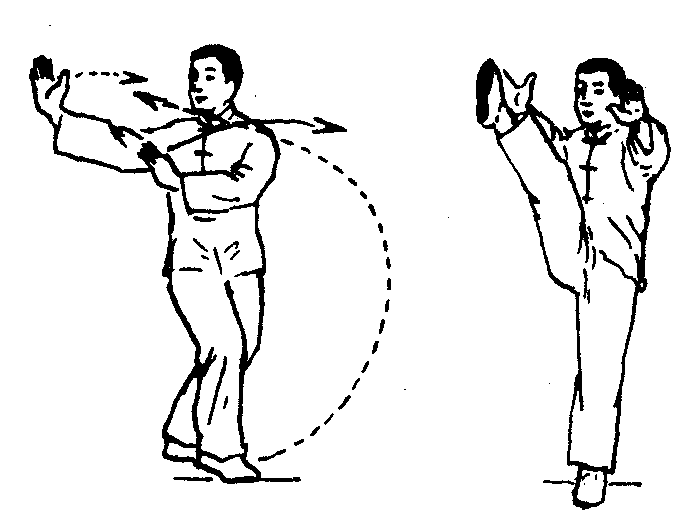摆莲脚
太极拳腿法之一。是一种弧形直摆击响性腿法。各式太极拳中都有摆莲脚动作。摆莲脚是太极拳七种主要腿法之一,在各种太极拳套路中是出现次数最多的腿法。动作过程:(以右摆莲脚为例)左腿微屈站稳。右腿从左侧摆起经面前向右做扇形摆动,两手在额前依次迎拍脚面。(图2—4—35)动作要领:做摆莲脚时要做到:
❶以大腿带小腿,力达脚面。
❷击拍时,脚面展开,腿自然伸直。
❸击拍要准确、响亮(两响)。
❹击拍高度为面额前方。攻防含义:摆莲脚是用腿、脚横击对方。其特点是攻击面大,力量重。注意事项:
❶做摆莲脚时,上体稍前倾,不可左右摇摆。
❷有时做摆莲脚伴随着身体转动,支撑腿要同时转动,并站稳。
❸老年人做摆莲脚时,手可不用击拍脚面。用两手击拍大腿就可,摆动腿也可稍屈。

图2—4—35 摆莲脚